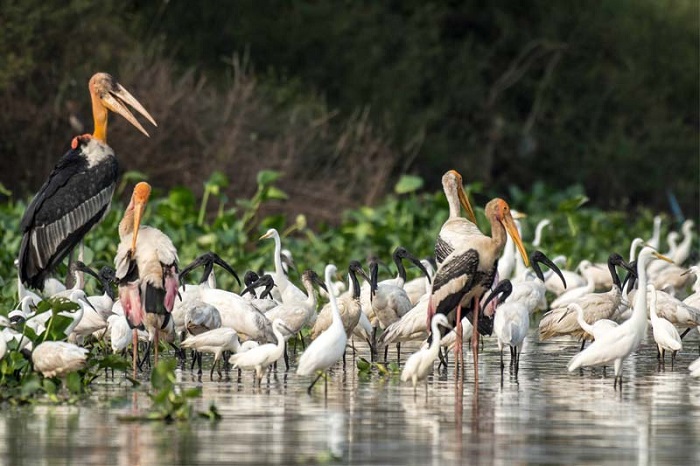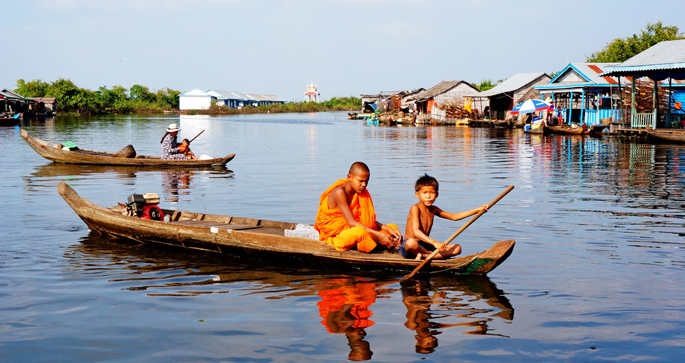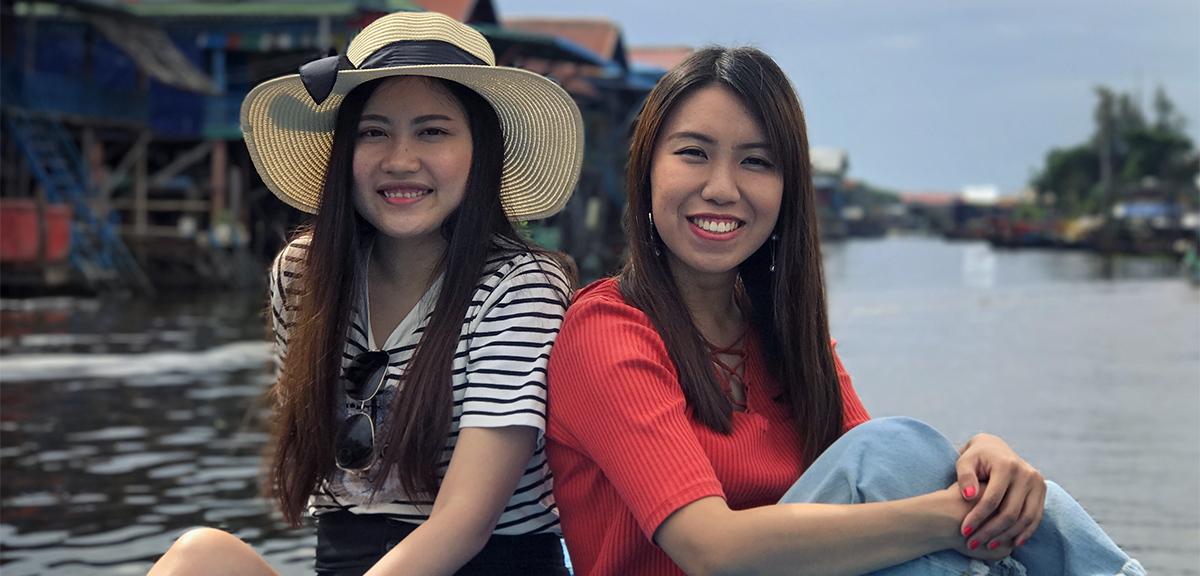
Good to know before travelling Tonle Sap Lake, Siem Reap, Cambodia
The Tonle Sap Lake of Cambodia is the largest freshwater lake in South East Asia. In 1997, Tonle Sap was nominated as a UNESCO biosphere reserve
Tonlé Sap is a seasonally inundated freshwater lake, the Tonlé Sap Lake and an attached river, the 120 km (75 mi) long Tonlé Sap River, that connects the lake to the Mekong River.
They form the central part of a complex hydrological system, in the 12,876 km2 (4,971 sq mi) Cambodian floodplain covered with a mosaic of natural and agricultural habitats that the Mekong replenishes with water and sediments annually.
The central plain formation is the result of millions of years of Mekong alluvial deposition and discharge. From a geological perspective, the Tonlé Sap Lake and Tonlé Sap River are a current freeze-frame representation of the slowly but continuously shifting lower Mekong basin.
ABOUT THE WILD ANIMAL IN TONLE SAP LAKE:
Aside from those seeking and finding spirituality, birdwatchers aren’t left out either. With the abundance of fish swept upstream into the Tonle Sap Lake during the high-water season, an entire ecosystem of birds tags along. In 1997, the Tonle Sap was officially recognized as a UNESCO Biosphere Reserve for its unique wetland habitat that supports a large seasonal population of waterbirds.

The Tonle Sap Biosphere Reserve is split into three key protected areas known as biospheres. Of the three biospheres, Prek Toal (to the Northwest of the Tonle Sap) is arguably the most stunning. A bird lover’s dream, the Prek Toal Bird Sanctuary Biosphere Reserve is regarded as the single most important breeding ground for globally threatened large waterbirds such as the Black-headed Ibis, Painted Stork, Greater and Lesser Adjutants, Spot-billed Pelican, Milky Stork and the Grey-Headed Fish Eagle.
As is often the case, who you sail with determines how rewarding your Prek Toal excursion would be. Sailing into this vast, 121-square mile biosphere on a speedy, low-emission, ergonomically-designed alumnium launch boats privately owned and maintained by the cruise line, with an knowledgable guide in tow, is perhaps the most ideal.
THE TONLE SAP LAKE FOR HUMAN LIFE:
In the high-water season, when the Tonle Sap lake is accessible by cruise ship, this is the best time to discover a fascinating façade of Cambodian culture that’s brought to vivid life on water.
Better still if your Mekong cruise ship carries a reliable fleet of launch boats that serve as starting points for excursions to the more undiscovered communities of the Tonle Sap, which are typically located further away from Siem Reap (i.e. at the opposite bank of the lake).

Out of the 3 million people living in and around the Tonle Sap lake, 90% earn a living or are dependant on fishing or agriculture. Living in “floating villages” on either stilted homes or houseboats accessible only by water, villagers can be found in their long sampans out in the day, using bamboo fish raps to catch fish.
Another common sight: Schoolchildren getting into a bit of squeeze, four or five of them, on board a single sampan — embarking on a regular after-school joy ride that looks like the very definition of freedom.
A skiff, or kayaking, tour of Tonle Sap’s floating villages unravels a culturally significant, yet seldom-seen side of Cambodian life. As your guide charts a path down waterways, you soon realize you can no longer anticipate what you’ll be seeing next. It could be a floating church, a family with a dozen children, or an ice factory that you’d feel compelled to disembark to explore. Be prepared to be pleasantly surprised at every turn.

The Tonle Sap isn’t just a blessing for the locals. To visitors from far and wide, this is an extraordinary example of nature that keeps on giving; an inspiring ensemble of sight, sounds, experiences that add to an already distinctive, culturally-rich Mekong river cruise.
